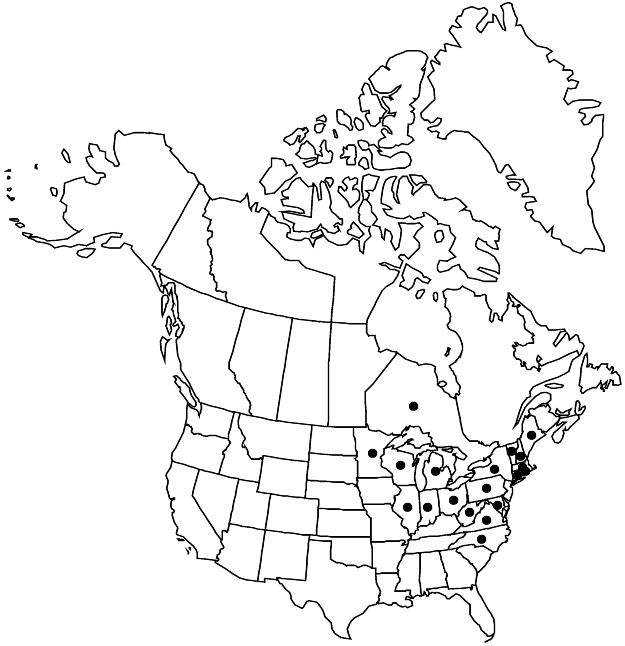Crataegus coccinea var. coccinea
Leaf-blades ovate, 5–8 cm widest in proximal 1/3 (length/width = 1.4–1.5), elongate, plane, base broadly cuneate to truncate, rarely slightly cordate, lobe sinuses deep. Stamens (5–) 8–10. Pomes usually suborbicular. 2n = 51, 68.
Phenology: Flowering May; fruiting Sep–Oct.
Habitat: Brush, woodland margins, fencerows, overgrown pastures
Elevation: 10–1300 m
Distribution

Ont., Conn., Ill., Ind., Maine, Md., Mass., Mich., N.H., N.Y., N.C., Ohio, Pa., R.I., Vt., Va., W.Va., Wis., in Europe
Discussion
Variety coccinea is found throughout the range of the species except for southern Quebec; it is the only variety found in the Appalachians south of Pennsylvania. An old report for Minnesota has not been confirmed. Crataegus albicans is a variant with particularly broad leaves and nearly glabrous inflorescences. Crataegus aulica Sargent perhaps belongs here. According to J. A. Macklin and J. B. Phipps (2002), much of the material named C. ellwangeriana Sargent [C. pedicellata var. ellwangeriana (Sargent) Eggleston] belongs to C. pennsylvanica Ashe.
Selected References
None.
Lower Taxa
"glabrate" is not a number."thin" is not a number."adnate" is not a number."dm" is not declared as a valid unit of measurement for this property.